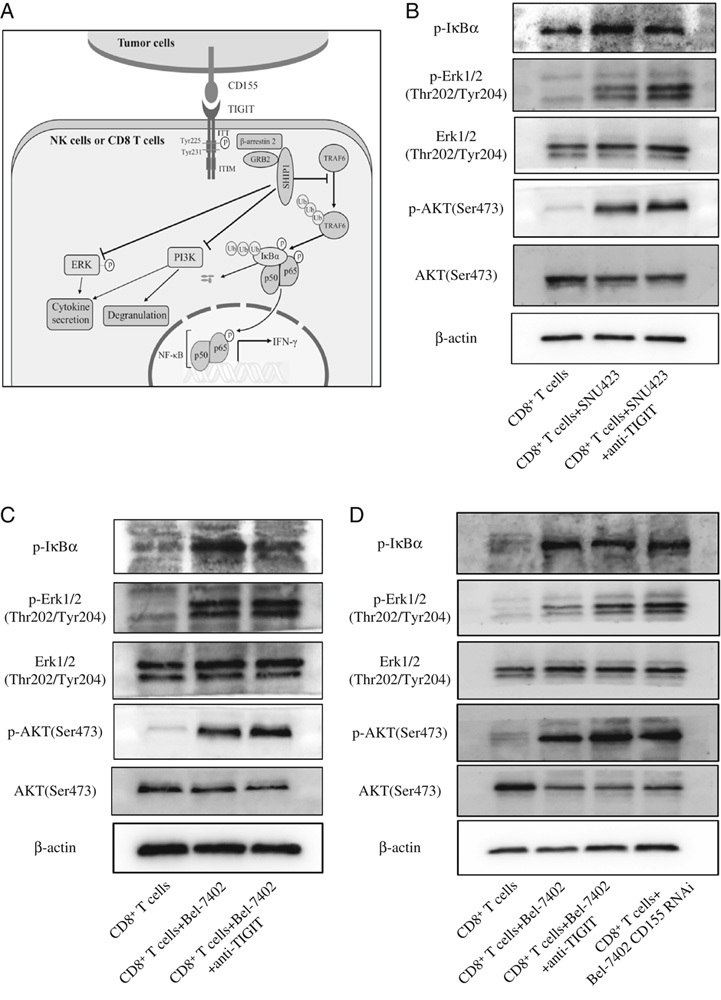FIGURE 4.

A, Mechanism of T-cell immunoglobulin and immunoreceptor tyrosine-based inhibitory motif domain (TIGIT)/CD155-mediated suppression effects in natural killer cells. Upon interaction with CD155, the immunoglobulin tail tyrosine (ITT)-like motif of TIGIT is phosphorylated on Tyr225 and binds the cytosolic adaptor growth factor receptor-bound protein 2 (GRB2), which can recruit SH2 domain–containing inositol-5-phosphatase 1 (SHIP1) to inhibit phosphoinositide 3-kinase (PI3K) and mitogen-activated protein kinase (MAPK) signaling. In addition, phosphorylated TIGIT recruits SHIP1 through β-arrestin 2 and impairs nuclear factor-κB (NF-κB) activation by blocking tumor necrosis factor receptor–associated factor 6 (TRAF6) autoubiquitylation. B–D, Representative immunoblot showing AKT, p-AKT, ERK, p-ERK, and p-IκBα expression in stimulated T cells cocultured with SNU423, Bel-7402, and Bel-7402-CD155 RNAi cells with/out anti-TIGIT antibody. ERK indicates extracellular-regulated kinase; IFN, interferon; NK, natural killer.
